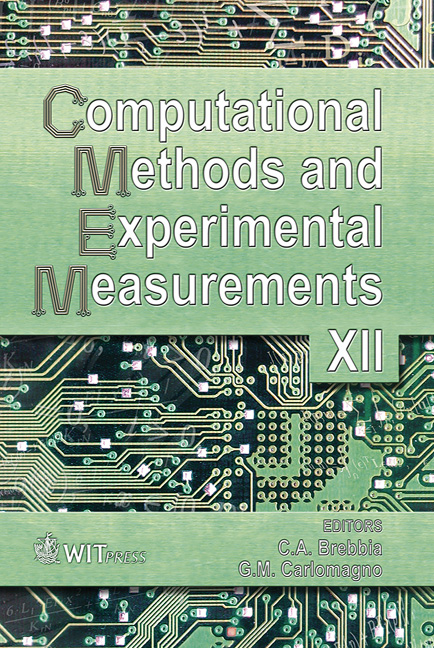Computing The Mutual Impedances Between Segments Of Earthing System Conductors
Price
Free (open access)
Transaction
Volume
41
Pages
10
Published
2005
Size
458 kb
Paper DOI
10.2495/CMEM050621
Copyright
WIT Press
Author(s)
S. Vujević, P. Sarajčev & R. Lucić
Abstract
An electromagnetic model of the non-equipotential large earthing systems at power frequency includes transversal and longitudinal mutual impedances between segments of earthing conductors. This paper describes a new algorithm for computing the mutual impedances. Because the integrand contains a singularity and involves a double integration, the integral expressions for mutual impedances are subdivided into two terms. The first term can be computed as the solution of an analytic expression. The second term is not singular and can be evaluated by a new numerical integration routine, which is based on seven-point numerical integration with Gauss-Legendre quadrature. Keywords: transversal and longitudinal mutual impedances, non-equipotential earthing grid, singularity, numerical integration, seven-point Gauss-Legendre quadrature. 1 Introduction Numerical models of the non-equipotential large earthing systems at power frequency, which includes transversal mutual impedances (or resistances) between segments of earthing conductors as well as longitudinal mutual impedances, are presented in [1, 2, 3, 4]. Numerical models for transient analysis of earthing grids are presented in [5, 6, 7, 8]. This paper presents a novel algorithm for computing the self and mutual impedances involved in electromagnetic earthing grid model presented in [1]. Using this algorithm, a high accuracy can be obtained in a short execution time.
Keywords
transversal and longitudinal mutual impedances, non-equipotential earthing grid, singularity, numerical integration, seven-point Gauss-Legendre quadrature.





